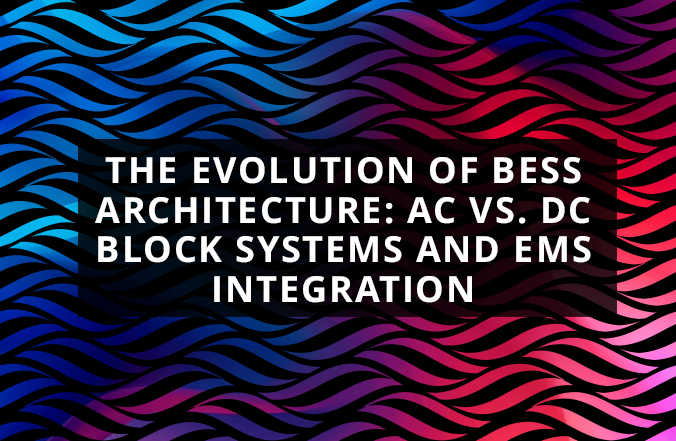The Battery Energy Storage System (BESS) market is witnessing significant architectural shifts, primarily in the deployment of AC-block and DC-block systems. Building upon our previous discussion of AC-Coupled vs. DC-Coupled systems in PV+BESS plants, this post explores the broader architectural trends of AC-block and DC-block systems. The evolution impacts project design, cost, and operational flexibility. Understanding the nuances of these configurations is crucial for stakeholders involved in renewable energy integration and grid stabilization. Nor-Cal Controls, with its expertise in Energy Management Systems (EMS), plays a key role in optimizing these BESS deployments.
Understanding BESS Architectures:
Traditionally, DC-block BESS configurations have been prevalent. These systems utilize separate battery modules and Power Conversion Systems (PCS), offering flexibility in sizing the PCS to specific project requirements. More recently, AC-block systems have emerged, integrating PCS within the battery enclosure. This approach simplifies installation and potentially offers more comprehensive performance guarantees.
- DC-Block Characteristics:
- Requires external PCS.
- Offers flexibility in PCS sizing.
- Facilitate integration with third-party EMS.
- Can be more cost-effective on a per-kWh basis.
- AC-Block Characteristics:
- Integrates PCS within the battery enclosure.
- Simplifies installation and design.
- Often includes integrated controls and fleet management software.
- Typically provides comprehensive performance guarantees.
Industry Trends and Considerations:
The choice between AC-block and DC-block systems is influenced by various factors, including project scale, grid connection requirements, and operational objectives.
- Flexibility vs. Integration: DC-block systems provide greater flexibility in PCS sizing and EMS integration, which is particularly important for projects requiring customized solutions or adherence to specific cybersecurity protocols. AC-block systems, on the other hand, offer streamlined integration and simplified deployment.
- Cost and Performance: While DC-block systems may offer lower upfront costs, AC-block systems provide integrated performance guarantees, potentially reducing long-term maintenance and operational expenses.
- EMS Integration: Regardless of the chosen architecture, effective EMS integration is essential for optimizing BESS performance. An EMS must provide robust monitoring, control, and data analysis capabilities to ensure efficient energy storage and discharge.
Nor-Cal Controls' Role in BESS Integration:
Nor-Cal specializes in providing EMS solutions that enhance the performance and reliability of BESS deployments. Our systems are designed to integrate seamlessly with both AC-block and DC-block architectures, offering:
- Open-Architecture SCADA Systems: Our EMS SCADA platform provides comprehensive monitoring and control capabilities, enabling users to manage individual assets or entire fleets.
- Customizable Solutions: We work with customers to develop tailored EMS solutions that align with their specific project requirements and operational objectives.
- Enhanced Reliability and Efficiency: Our EMS solutions optimize BESS performance by providing real-time data analysis, predictive maintenance, and advanced control algorithms.
- Partnering with IES: Nor-Cal Controls partners with International Energy Storage (IES) to provide fully integrated BESS solutions that leverage high-quality LFP batteries and advanced liquid cooling technology. This partnership provides a strong and reliable base for our EMS systems to operate within.
Key Technical Aspects of IES BESS:
- Utilizes Lithium Iron Phosphate (LFP) batteries.
- Employs liquid cooling systems for thermal management.
- Adheres to industry safety standards, including UL 9540 and UL 9540A.
- Provides a pre-assembled container design.
The selection of BESS architecture is a critical decision that impacts project performance and economic viability. Nor-Cal Controls' EMS solutions are designed to provide the flexibility and control necessary to optimize both AC-block and DC-block deployments, ensuring reliable and efficient energy storage. Learn how sur EMS solutions optimize your BESS deployment. Contact Nor-Cal today.





